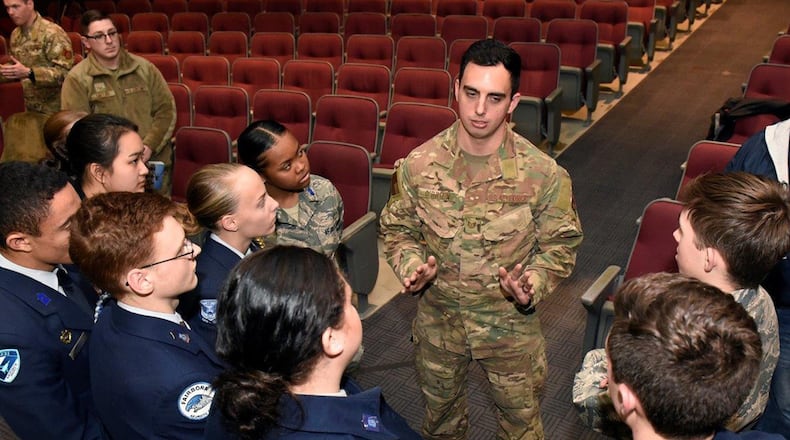While on temporary duty during an exercise, O’Brien, who is a pararescueman, or PJ, charged into a burning vehicle in South Korea, where he extracted an injured civilian and successfully performed life-saving procedures.
He also embedded with the Secret Service and Joint Special Operations Forces as part of a President of the United States protection team, ensuring safety and security during the first United States and North Korean negotiation summit.
O’Brien then shared details of what he called his biggest mission ever, explaining what happened during the 2018 rescue of 12 boys and their coach from the Wild Boar soccer team inside the Tham Luang Cave complex in Thailand.
Leaders entered the complex and could visibly see water rising after being inside for only 30 minutes, O’Brien said.
“Our initial job was to try and find alternate entrances into the cave,” he said. “The landscape was covered with thick canopy and poisonous caterpillars – it was terrible. Luckily, this was a one way in and one way out kind of cave. Otherwise, I doubt we would have ever found them.”
Rescue personnel bought chain saws from local stores to cut down trees to clear space for helicopters to land and bring critical supplies, including water pumps to try to get the water out of the caves and air bottles.
“We ended up carrying more than 300 air tanks into the cave, and for most of us, it was the first time we had ever been in a cave,” O’Brien said.
The 6-mile-long cave complex has multiple chambers throughout. O’Brien said that U.S. personnel were there in an advise-and-assist role and were only permitted to enter the complex as far as the third chamber.
British cave divers continued through the complex, laying down guidelines as they went, until they finally reached the boys and their coach. The next problem to solve was how to get them all out safely. More expert divers and doctors were flown in to consult about how they would approach this part of the rescue operation.
According to O’Brien, fortunately, one of the Australian divers was also an anesthesiologist.
“Without him, I don’t think we would have figured out how to get these kids out,” he said.
The boys and their coach had been in the cave for over a week with no food and had been drinking the water that was dripping off the cave walls.
“We were tasked with figuring out how to get food and water back to them, and we also suspected that oxygen levels would be getting low, which was proven to be true,” said O’Brien.
The cave divers decided they would not dive with the kids unless the kids were fully sedated because it would be too much of a risk for them as well as for the divers.
It would end up taking five hours each time the divers brought out another group of boys. Doctors had to teach the divers how to administer the required drugs to each of the boys when they reached them.
Ultimately, all 12 of the players and their coach were brought out of the cave alive.
Then, on Sept. 11, 2019, during a flight back to the United States to receive his award, O’Brien was in the right place at the right time again and performed another life-saving act: resuscitating a baby that had lost consciousness after choking.
“I like to prevent a person’s worst day from being their last day,” O’Brien said.
About the Author
